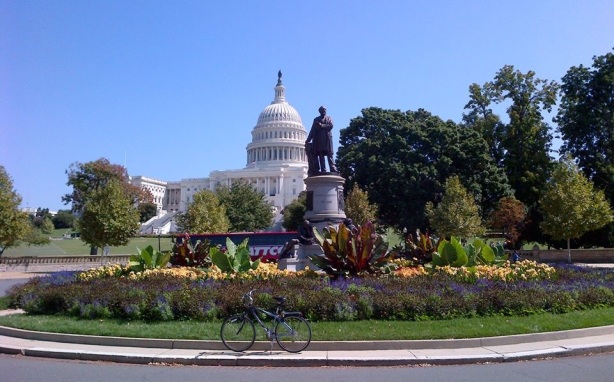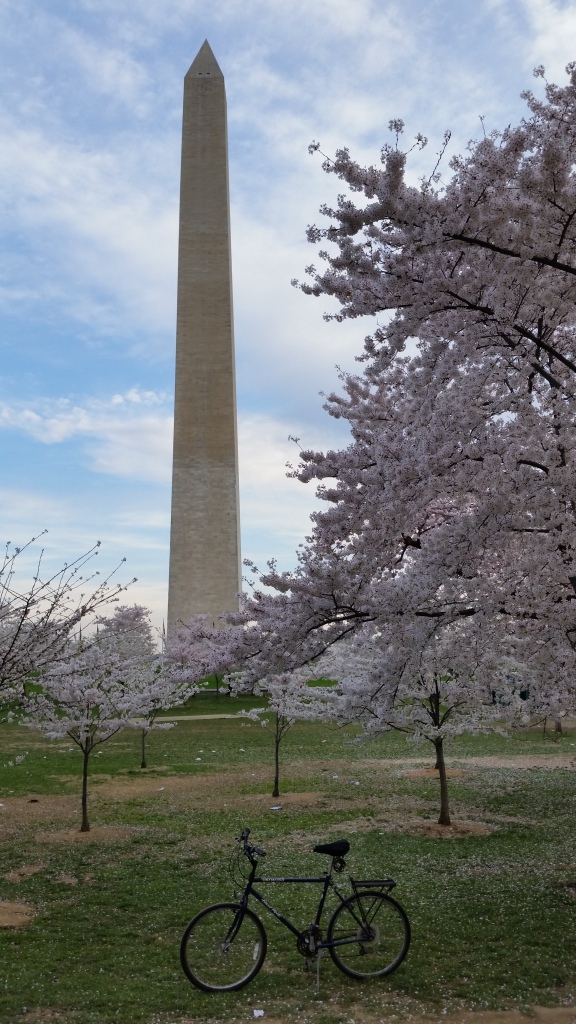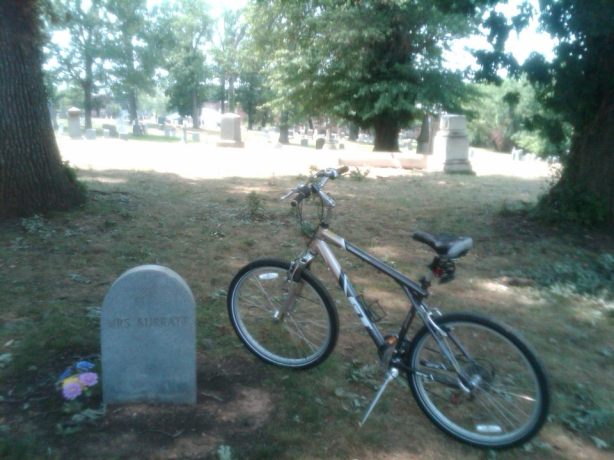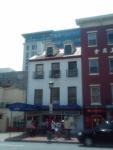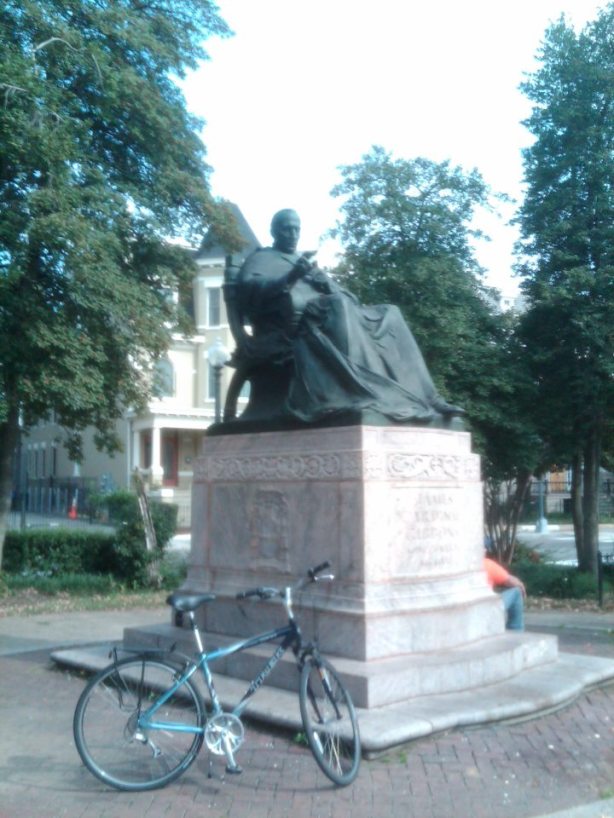Located in front of the old District of Columbia City Hall, now home to the District of Columbia Court of Appeals, in the 400 block of Indiana Avenue in D.C.’s Judiciary Square neighborhood (MAP) stands a statue of Abraham Lincoln. The statue depicts him standing, wearing a long coat with a bow tie and waistcoat. His left hand rests on a fasces while his right arm is by his side. Lincoln’s partially open right hand points to the ground as he looks to his left. Interestingly, the right hand was replaced at some point and the new one is considered too large to scale. Also, a sword or scroll previously hung by his right side, but is now missing.
The white marble statue was created by an Irish-American sculptor from D.C. named Lot Flannery, who coincidentally happened to not only know President Lincoln but was also present at Ford’s Theater on the night of his assassination. And on this bike ride I stopped by to see the statue.
Now, there are a number of statues of the 16th President in the national capital city. In fact, there are six different statues. The most famous of which is Daniel Chester French’s depiction of the President sitting that is located inside The Lincoln Memorial. Another example is Ivan Schwartz’s statue of President Lincoln standing next to a horse, presumably his favorite horse named Big Bob, that’s located on the grounds of President Lincoln’s Summer Cottage. There is also Thomas Ball’s The Emancipation Memorial, also known as the Freedman’s Memorial, which has recently been deemed controversial by some activists and for which D.C. Representative Eleanor Holmes Norton has introduced legislation to remove, arguing that 19th-century memorial doesn’t do enough to honor slaves’ contribution to their own freedom. But the marble statue I rode to see during this bike ride is the oldest Lincoln statue in existence.
The statue was dedicated on April 15,1868, on the third anniversary of President Lincoln’s death. All of the city’s offices were closed at noon for the dedication, and all flags were flown at half-staff that day. And an estimated 20,000 people, around 20% of Washington’s population at that time, attended the dedication. Dignitaries at the unveiling ceremony included President Andrew Johnson and Generals Ulysses S. Grant, William Tecumseh Sherman and Winfield Scott Hancock. Supreme Court Justices and members of Congress were not in attendance, however, because President Johnson’s impeachment trial was taking place. A Masonic ceremony, along with music and prayers, took place at the dedication before the main speech by Major General Benjamin Brown French. Following the speech, D.C. Mayor Richard Wallach introduced President Johnson, who uncovered the statue to a cheering crowd, followed by more music and a benediction to conclude the unveiling ceremony.
The statue has been removed and rededicated twice. The first rededication was in 1923 after a renovation of City Hall. Some of the city’s residents and officials didn’t want the statue reinstalled after renovations were complete because the much larger and grander Lincoln Memorial was already under construction. But following an outpouring of support from citizens and a veterans group named The Grand Army of the Republic, the decision was made to restore and rededicate the statue. But by the time the decision was made the statue was missing. It was later found in crates behind the Bureau of Engraving and Printing. On June 21, 1922, an Act of Congress authorized the rededication, which took place April 15, 1923, 55 years after the initial dedication.
The marble statue originally stood on an 18-foot high marble column. Flannery explained, “I lived in gloom following the assassination and I resolved to place it so high that no assassin’s hand could ever again strike him down.” However, it was so high it was difficult to see and appreciate. So when it was removed in 1918 for the city hall renovation, it was re-erected on an two-portion square and rectangular granite base for the rededication in 1923.
The second rededication took place on April 15, 2009, 144 years after the original dedication, after a three-year remodeling of the old City Hall.
The marble statue measures 7.3 feet high and 2.9 feet wide, while the granite base measures 6.4 feet high and 7 feet wide. An inscription on the rear of the sculpture reads, “Lot Flannery, Sculptor.” On the front of the base is an inscription that reads, “LINCOLN.” An inscription on the lower portion of the rear of the base reads, “Frank G. Pierson, Architect.” And on the upper portion of the rear of the base is an inscription that reads:
“ABRAHAM LINCOLN
1809 – 1865
THIS STATVE WAS ERECTED
BY THE CITIZENS OF THE
DISTRICT OF COLVMBIA
APRIL 15, 1868
RE-ERECTED APRIL 15, 1923
VNDER ACT OF CONGRESS
JVNE 21, 1923”





